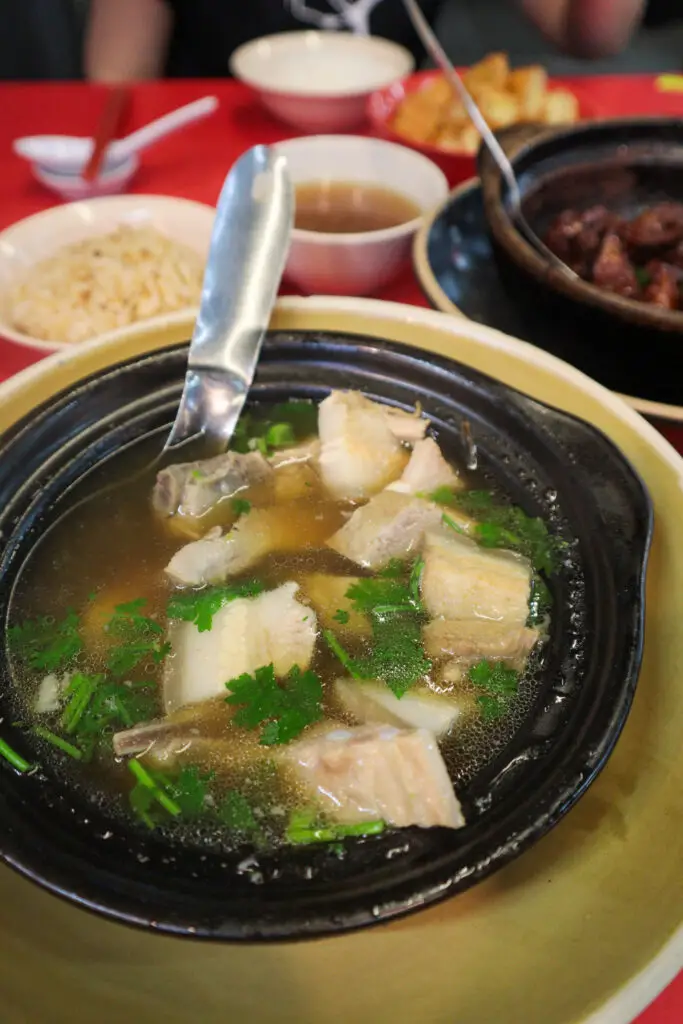
Hing Kee Bak Kut Teh in Kepong
[Non-halal] We finally checked out Hing Kee Bak Kut Teh in Kepong, which is a recommended Bib Gourmand restaurant on the Michelin Guide.
So does it live up to the hype? Read on to find out.
Hing Kee Bak Kut Teh in Kepong
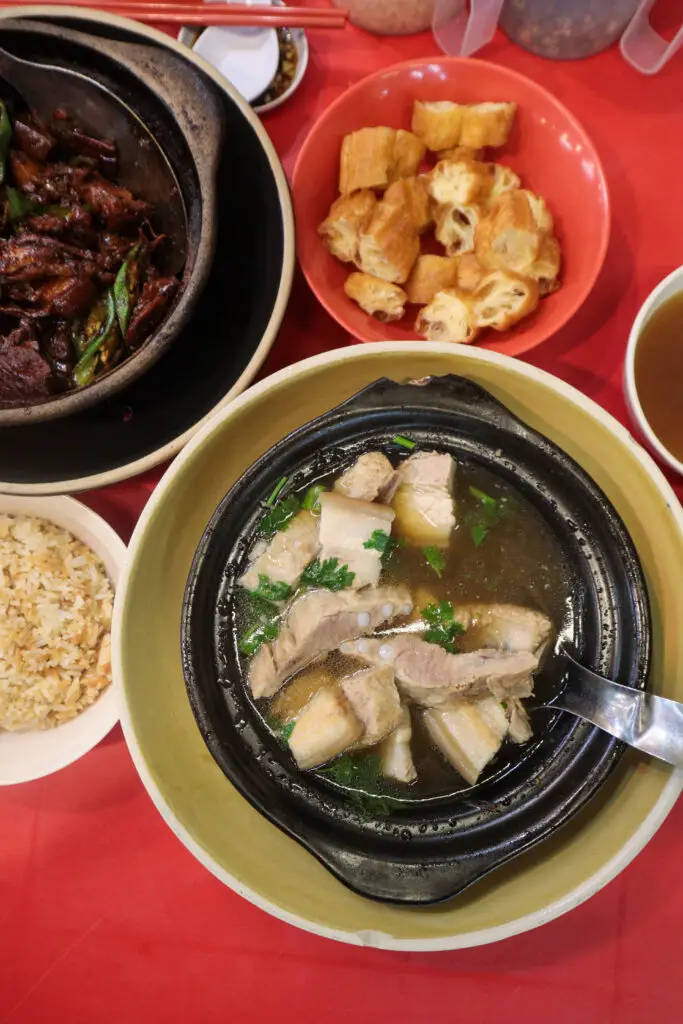
Bak Kut Teh is one of our favourite dishes. Translated as meat bone soup from Hokkien, the dish is a type of herbal-based soup dish that features pork bones and meat simmered in herbs and spices for hours.
There are a lot of discussions on the origin of this dish, with Singapore and Klang claiming to be the hometown for this dish.

However, the progenitor of this dish is likely to be the niu pai (stewed beef ribs) in Fujian. In the early 20th century, immigrants from Fujian have settled in Klang and Singapore, where the different types of bak kut teh were created.
Malaysia-style bak kut teh (or Hokkien-style bak kut teh) are notable for its heavy reliance on herbs with a dark broth, while the Singapore-style bak kut teh (or Teochew-style) are lighter in colour and features more pepper and garlic in the broth.
What style does Hing Kee serve?
Even in Malaysia, we’d argue that there are differences between the bak kut teh served in Klang vs. others served elsewhere.
For one, Klang’s bak kut teh tend to be more fatty and thicker in broth with a very prominent herbal taste (see our posts: Ah Her Bak Kut Teh, Weng Heong BKT).
As for the ones in Petaling Jaya/KL, they tend to be not as fatty and may be lighter in herbal flavours. See our posts: Meat in Claypot, Madam Tey BKT.
So where does Hing Kee’s version stand?
A popular spot for locals
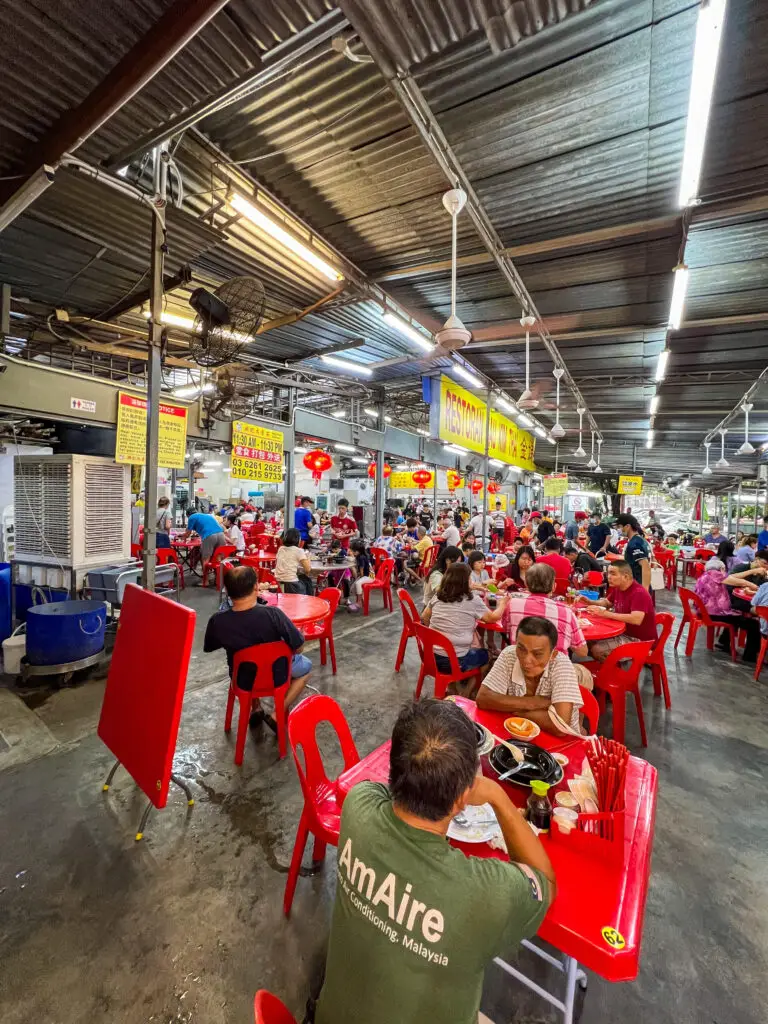
Hing Kee Bak Kut Teh is a popular spot with locals. In fact, we found out that Hing Kee is one of the go-to spots for a friend.
The recognition from the Michelin Guide has certainly brought more fame for the establishment, as it recently opened a second branch in Kepong.
We arrived at 6pm for an early dinner on a Saturday at its original branch – and were able to get a table immediately.
Despite the fame and busy-ness, service was fast.
It was a particularly good day for BKT then due to the rainy weather.
Light on the herbal flavours
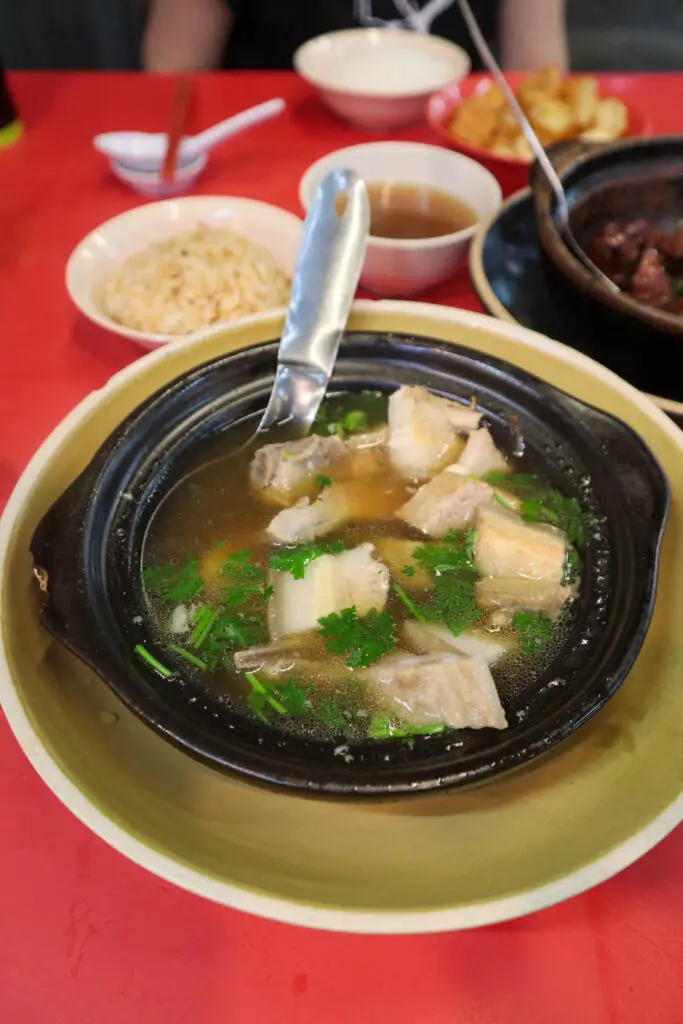
We ordered a bowl of Claypot Bak Kut Teh with our choice cuts of half-fatty-half-lean meat, and soft ribs.
First impressions – the broth here is light in colour and less fatty/thick vs. the Klang-style BKT.
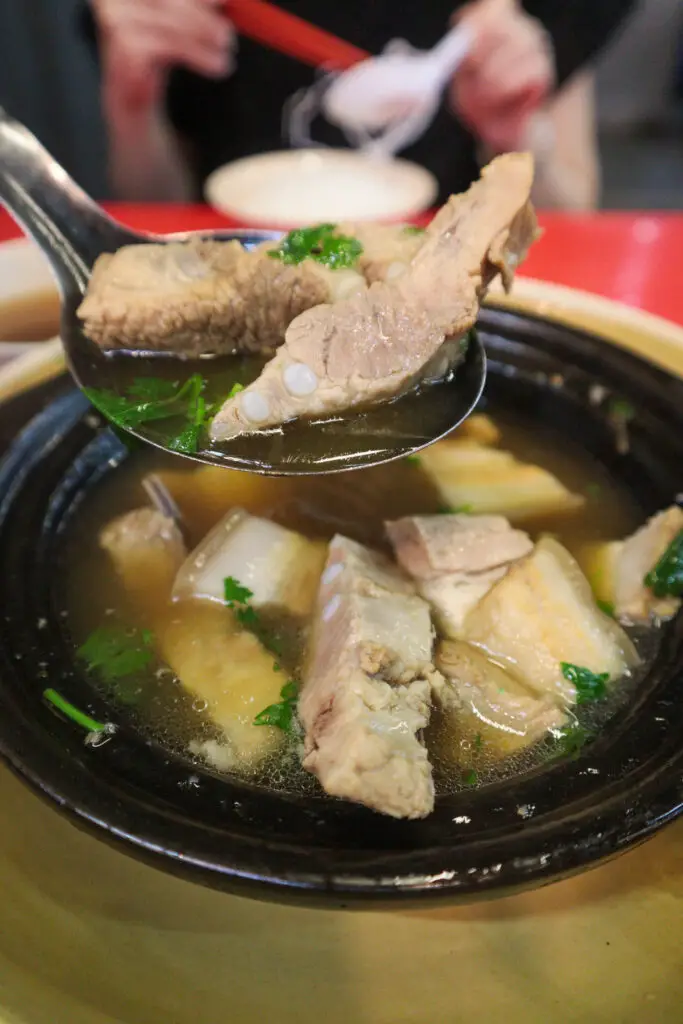
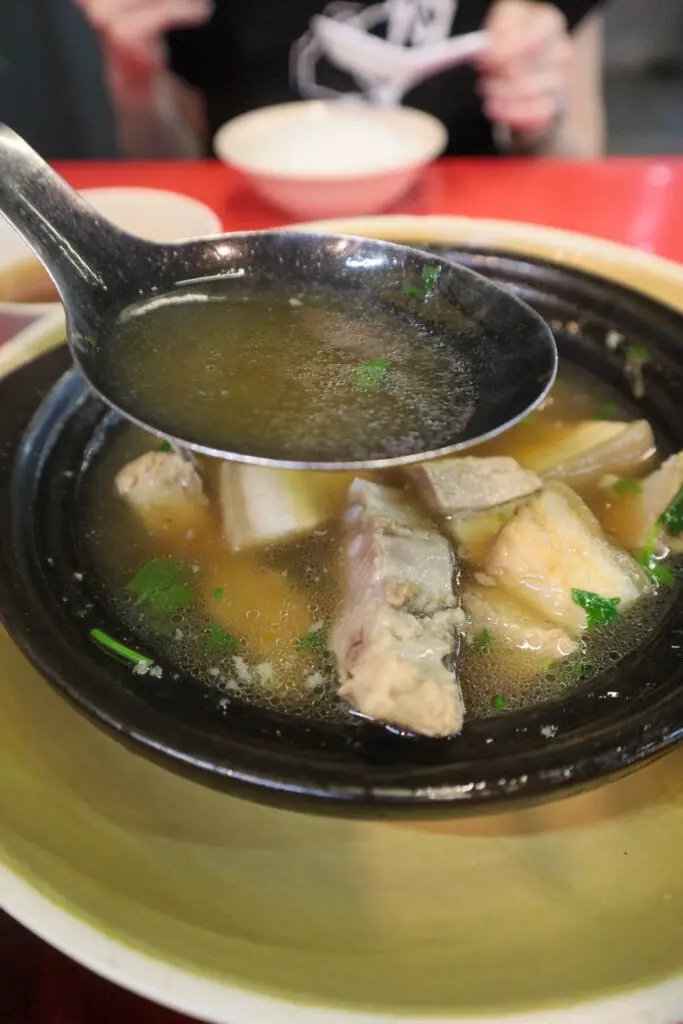
There is a mild touch of herbs in the broth, and it was also slightly coloured by the addition of coriander leaves.
Personally, we found the broth a bit too light for us – as we do prefer the stronger herbal flavours of the ones in Klang.
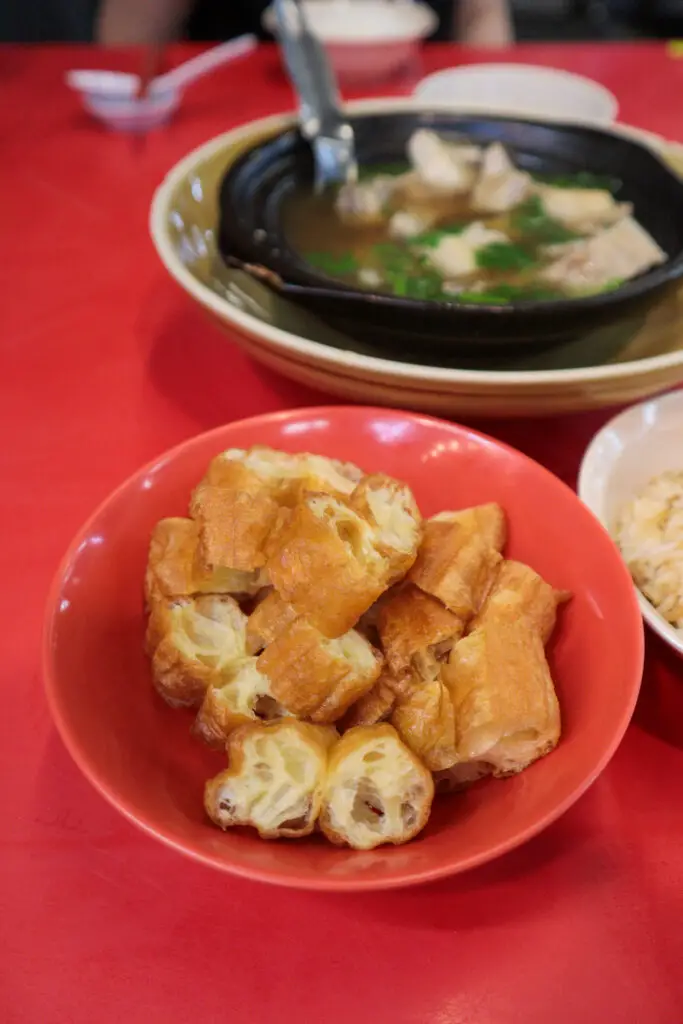
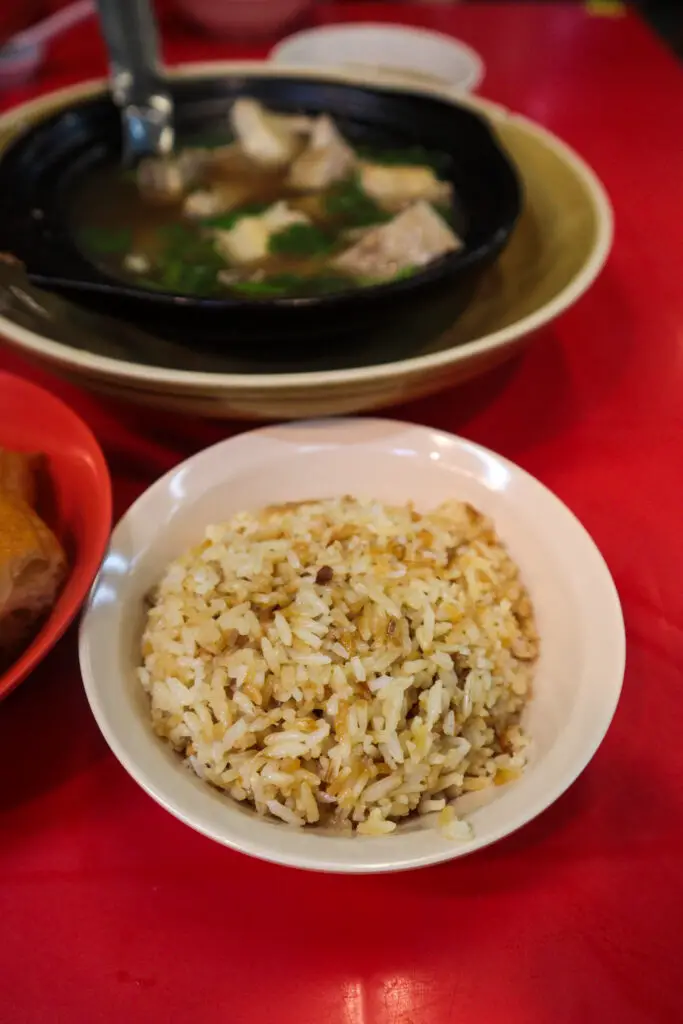
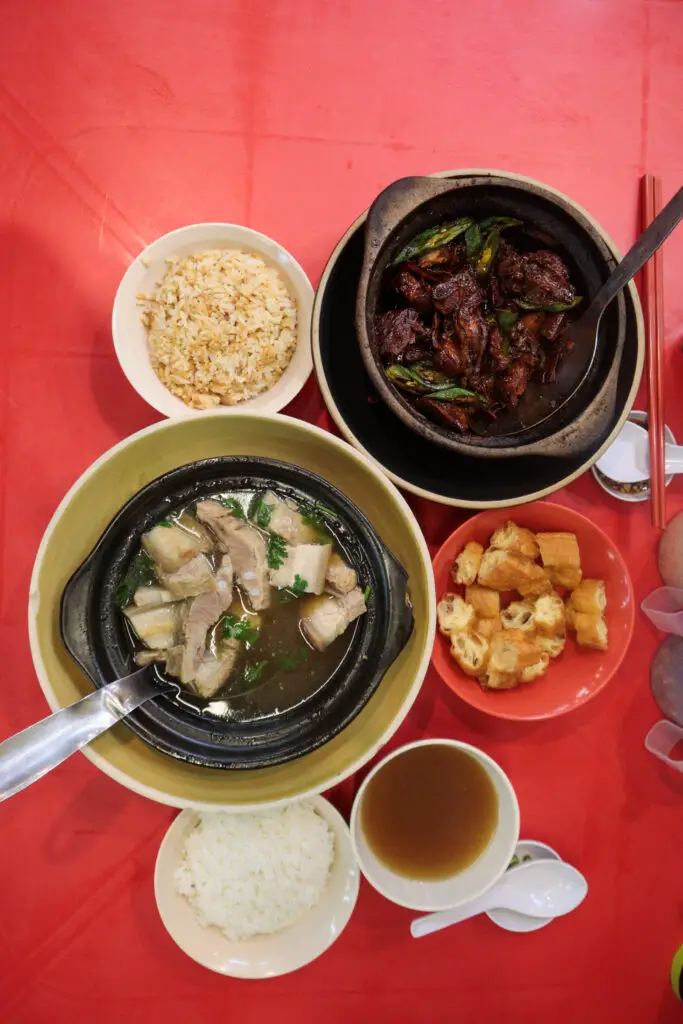
However, Hing Kee’s meat is one of the best we’ve tried as they were cooked to tenderness with a good meat-to-fat ratio.
Dry bak kut teh
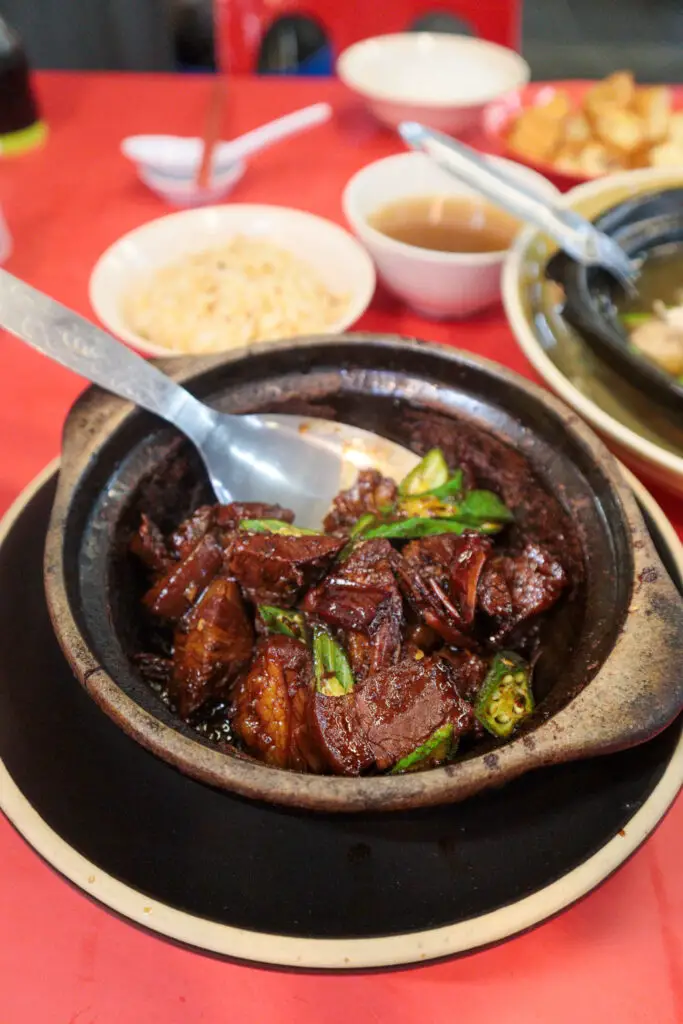
Instead, we found the Dry Bak Kut Teh here to be quite a standout. The dish has a prominent squid aroma with a hint of smokiness that goes really with the onion rice.
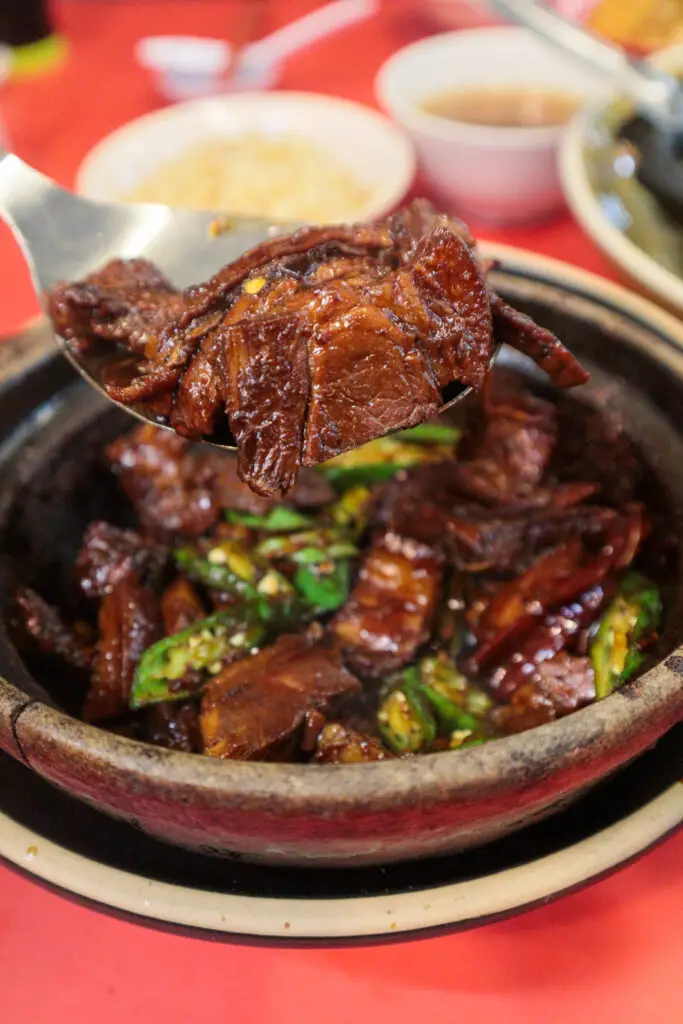
The meat was also very tender with melt-in-the mouth fat. We definitely prefer the dry BKT here to the soup version.
Hot & Sour Mustard Greens Stew
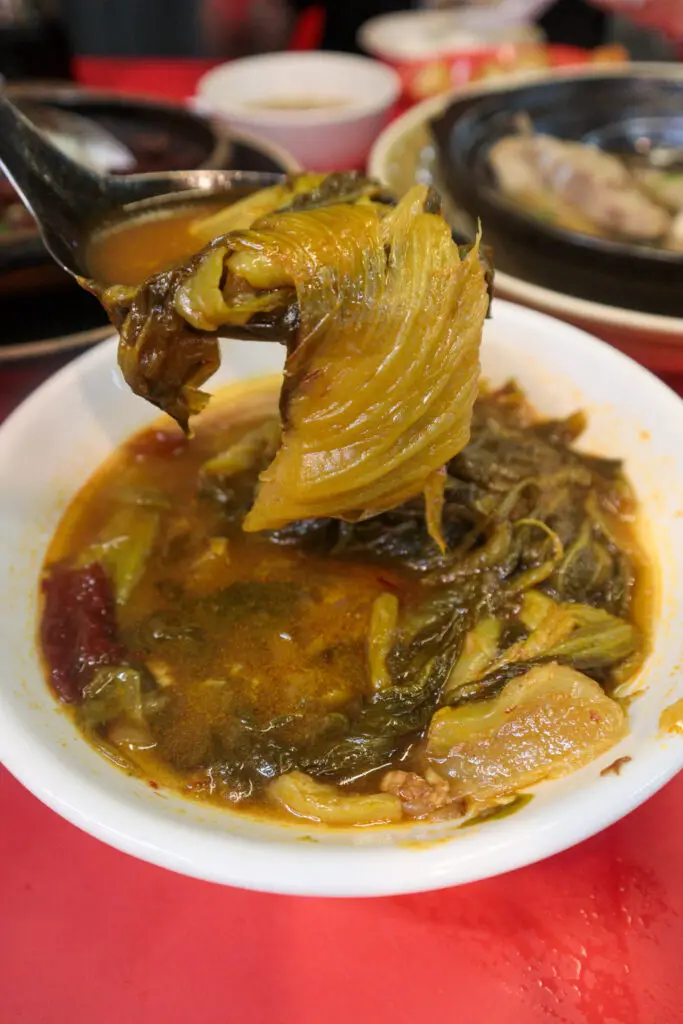
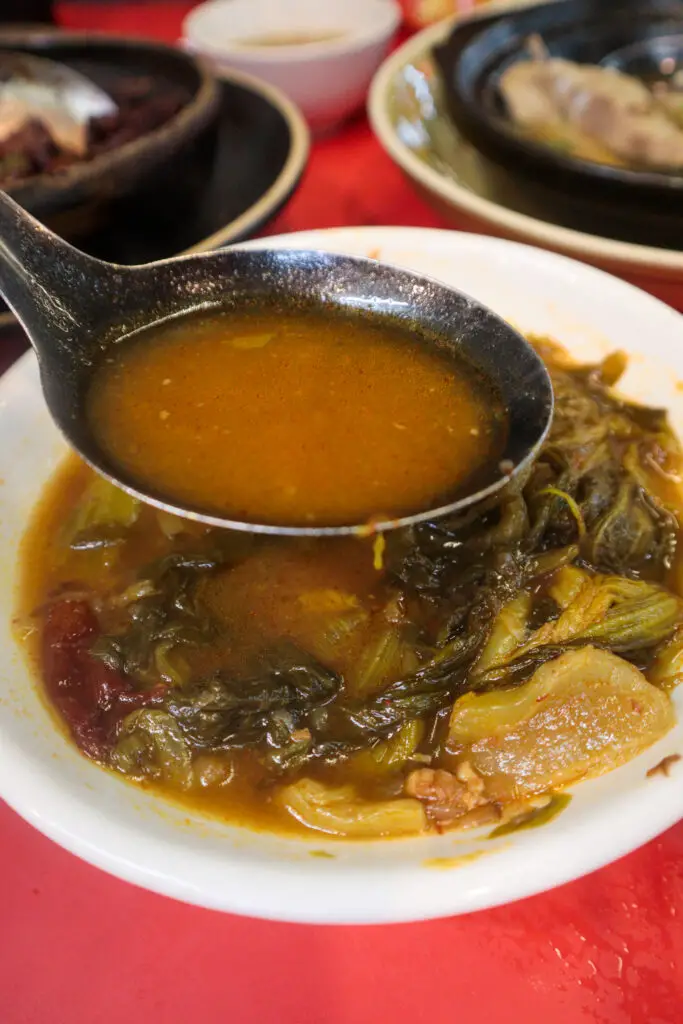
For fibre, we decided to try the Hot & Sour Mustard Greens Stew (aka suen lat choy/ 菜尾) as it came recommended by our friend.
We enjoyed this dish as it had a good balance of tanginess and spiciness, with very tender mustard greens to boot.
Summary
Overall, we prefer the dry BKT here to the soup version as the latter does not have the herbal flavour kick that we love.
However, the quality of the meat and the tenderness definitely stood out for us.
For soup BKT, we’d rather travel to Klang for our fix, while Meat in Claypot in Bandar Utama (and Heng Kee in Old Town PJ) are our go-to-spots closer to home.
Follow us on Instagram
Follow us on Instagram for the latest food adventures and recipes.
